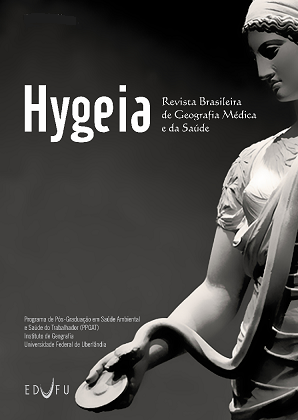EQUITY IN SPATIAL DISTRIBUTION OF PRIMARY HEALTH CARE IN THE CITY OF MANAUS, AMAZONAS, BRAZIL
DOI:
https://doi.org/10.14393/Hygeia142902Palavras-chave:
Health service. primary health care. spatial analysis. social indicatorsResumo
Objective. Evaluate the spatial distribution of health services in primary care according to the characteristics of social vulnerability in the city of Manaus, Amazonas, Brazil.
Methods. Selection of the census tracts that compose each human development unit was performed, creating a geographic database. Indicators were selected for each territorial unit and two constructs of social vulnerability were predicted using principal component analysis: one crude and other weighted by the population size. Four maps were created showing quintiles distribution of the constructs, with an overlap of spatial distribution of the coverage area of the family health and oral health teams. The descriptive analyzes of each map were performed.
Results. 62.1% of the territories of the existing family health teams and 74.2% of the oral health teams were located in areas of greater social vulnerability, represented by the two worst construct quintiles. However, when considering the resident population, an increase of the teams coverage in areas of lower weighted vulnerability was observed.
Conclusion. Despite low coverage the health teams were concentrated on areas of greater social vulnerability. Considering the population distribution of the municipality would allow an even more equitable distribution of health teams regarding organizational accessibility once it is expected that an equitable geographical distribution minimize barriers to access and improve the health conditions and quality of life of the population. The differences in levels of social vulnerability must be considered when making health policies, especially in places where the healthcare territorial coverage is low.








